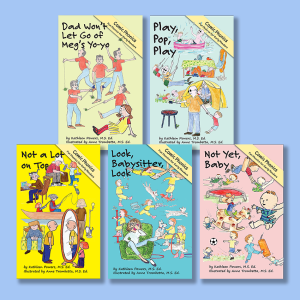An essay always starts with a topic. Your teacher might assign a topic based on what you are studying in school, such as evolution or Romeo and Juliet.
 But then what? Do you just start writing? Not if you want a good essay! No, you think about the topic, about what interests you. Does Harry Potter’s relationship with his aunt, uncle and cousin interest you? Does the paucity of strong female characters—just Hermione and Professor McGonagall—in the Harry Potter series interest you? You need to narrow down the topic. At this point, you may have written a list but no sentences.
But then what? Do you just start writing? Not if you want a good essay! No, you think about the topic, about what interests you. Does Harry Potter’s relationship with his aunt, uncle and cousin interest you? Does the paucity of strong female characters—just Hermione and Professor McGonagall—in the Harry Potter series interest you? You need to narrow down the topic. At this point, you may have written a list but no sentences.
So when do you start writing sentences? You start with a working thesis or topic sentence for the whole essay. Your thesis needs to be a statement, and it should be an opinion which you can back up with evidence. “Harry Potter’s aunt and uncle were lousy parents for him.” “Harry Potter books contain few strong female characters compared to strong male characters.”
Now what? Now come up with two, three, or four supporting ideas for that thesis statement (three if your teacher demands a five-paragraph essay). Write those supporting ideas as statements. “Harry’s aunt and uncle were lousy parents because they forced him to live in a closet while Dudley had a big bedroom.” “Harry’s aunt and uncle were lousy parents because they bought few toys for Harry and many for Dudley.” “Harry’s aunt and uncle were lousy parents because they didn’t tell him the truth about his dead parents.”
Thesis written. Supporting ideas written. Now what? Do you start your introduction? No. Now you search for evidence to back up your supporting ideas. Under each supporting idea, use three or more bullets to identify evidence. Use direct quotes or paraphrases. Add page numbers or other citation information. You want to have plenty of proof that your supporting ideas are true. If you can’t find enough evidence, eliminate that supporting idea and write another for which you can find data.
Thesis written, supporting ideas written, evidence jotted down. Now do you begin your introduction? Yes. Think how you can start out with either a hook or with general information about your thesis, narrowing your information with each introductory sentence you write.
For example, you could start by saying that Harry was raised by his aunt and uncle, a general fact. Next you could say that his aunt and uncle have a son about Harry’s age, another general fact. Now you say that Harry and Dudley are treated differently by Harry’s aunt and uncle, and that Harry is not treated well. Do you see how you are going from general information—Harry is raised by an aunt and uncle—to more specific information—Harry is not treated well by his aunt and uncle. Now you can add your thesis as the last sentence in this introductory paragraph.
Adding your body paragraphs should be easy. You already wrote the first sentence of each body paragraph, and you listed evidence. Turn the list into sentences and your body is done.
Now it is time to write the conclusion. Two “go-to” conclusions that work well are a full circle conclusion–returning to something you said in your introduction–or future looking introduction–talking about the future of the topic. For example, you could go full circle by saying that Harry’s aunt and uncle were lousy parents, but they provide a great deal of humor at the beginning of the Harry Potter books, hooking young readers. Or you could look to the future by saying that Harry Potter would certainly raise his children differently from the way his aunt and uncle raised him, providing comfortable bedrooms and using closets for clothes, broom sticks and wands–and maybe for a photo of their great uncle, great aunt and cousin.






